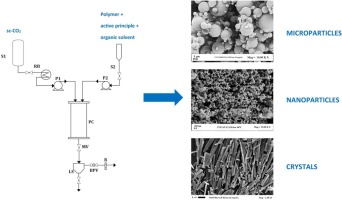- Home
- Blog
- News
- Basics
- Sources
- Agencies, Regulatory & Organisations
- CERSI Excipients Browser
- Excipient Report
- Excipient DMF List
- EXCiPACT Certified Companies
- Excipient Documentation
- Excipient EINECS Numbers
- Excipient E-Numbers
- FDA Inactive Ingredient List
- FDA GRAS Substances (SCOGS) Database
- IPEC Americas
- USP - U.S. Pharmacopeia
- Definitions
- Whitepapers / Publications
- Supplier
- Services
- Media
- Events
- 1st pharmaexcipients Poster Award
- Event Calendar
- Events featured by pharma-excipients
- 4th Annual Formulation & Drug Delivery Congress
- DDF Summit
- ExcipientFest Americas
- ExcipientFest Asia
- Global CompliancePanel
- International Conference and Exhibition on Pharmaceutics & Novel Drug Delivery Systems
- Formulation & Drug Delivery USA Congress
- Laboratory Medicine 2018
- Making Pharmaceuticals Europe
- Making Pharmaceuticals Exhibition
- Pharma Integrates
- PharmaExcipients China @CPhI China
- TTC Technology Training Center
- Jobs
- Online Sourcing
- Contact
07. May 2018
Supercritical antisolvent precipitation (SAS) has been successfully used to produce microparticles and nanoparticles of controlled size and distribution either as a single precipitates or by coprecipitation of two or more compounds. SAS coprecipitation process has produced different particles morphologies and, differently from the single compound SAS precipitation, process mechanisms involved have never been elucidated and the effectiveness of the technique has been verified only in some cases....
20. March 2017
Abstract Rifampicin-loaded submicron-sized particles were prepared through supercritical anti-solvent process using ethyl cellulose as polymeric encapsulating excipient. Ethyl acetate and a mixture of ethyl acetate/dimethyl sulfoxide (70/30 and 85/15) were used as solvents for both drug and polymeric excipient. When ethyl acetate was used, rifampicin was crystallized separately without being embedded within the ethyl cellulose matrix while by using the ethyl acetate/dimethyl sulfoxide mixture,...
21. February 2017
Abstract In order to improve the encapsulation process, a newly supercritical antisolvent process was developed to encapsulate fish oil using hydroxypropyl methyl cellulose as a polymer. Three factors, namely, temperature, pressure, and feed emulsion rate were optimized using response surface methodology. The suitability of the model for predicting the optimum response value was evaluated at the conditions of temperature at 60°C, pressure at 150 bar, and feed rate at 1.36 mL/min. At the...
24. February 2016
Coprecipitation of poorly water soluble drugs with an hydrophilic polymer can enhance the drug dissolution rate and, therefore, its bioavailability. In this work, supercritical antisolvent (SAS) precipitation is proposed for the coprecipitation of corticosteroids. This class of compounds cannot be directly processed by SAS, since it precipitates in form of large crystals. Dexamethasone (DMS), prednisolone (PDN) and budesonide (BDS) were tested. To control microspheres size and morphology, the...

